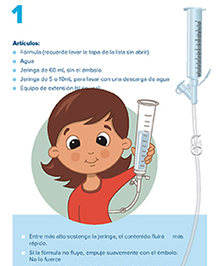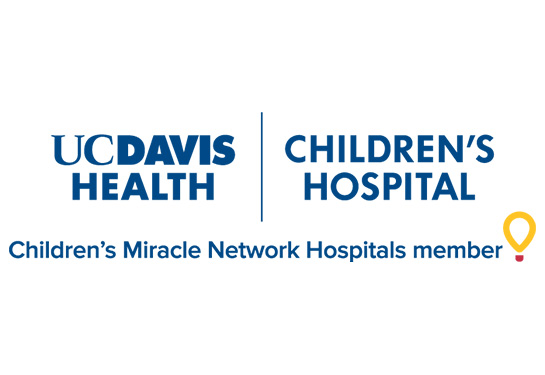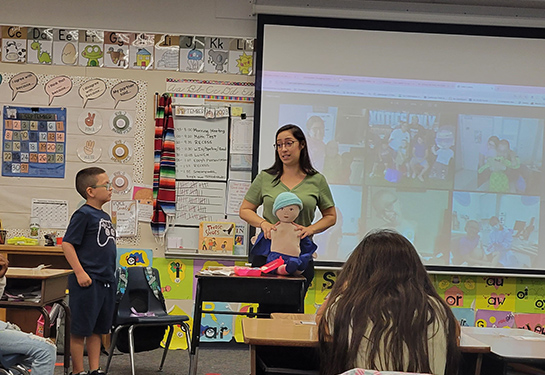CMN grant funds non-English caregiver booklets about home care of pediatric G-tube patients
Understanding the purpose, function and care of a child’s gastrostomy tube is critical
Hospitalization is scary for kids, but what can be even scarier is when pediatric patients are discharged. When caregivers assume responsibility for their child’s at-home health care, it can be a difficult transition. It can be particularly hard on non-English speakers.

A grant from Children’s Miracle Network (CMN) helps bridge the information gap by providing an “Introduction to Your Child’s Gastrostomy Tube” in Spanish and Russian so UC Davis Children’s Hospital patient caregivers have additional resources. The booklet includes information about a child’s gastrostomy tube, how to care for it at home and what to do if there is a problem. Also called a G-tube, a gastrostomy tube is inserted through the abdomen to deliver nutrition directly to the stomach. It's one of the ways doctors can make sure kids with trouble eating get the fluid and calories they need to grow.
Pam Mooney, a clinical nurse specialist with more than 30 years of experience, is the “go to” for pediatric tubes, line or drain questions at UC Davis Children’s Hospital. She authored “An Introduction to Your Child’s Gastrostomy Tube” and is the recipient of this grant. These new CMN-funded Spanish and Russian translations of the pediatric gastrostomy booklet can be accessed on the patient education site and the UC Davis Children’s Hospital web page under “Patient and Family Education A to Z.”
UC Davis Children's Hospital is the Sacramento region's only nationally ranked, comprehensive hospital providing care for infants, children, adolescents and young adults with primary, subspecialty and critical care. It includes the Central Valley's only pediatric emergency department and level I pediatric trauma center, which offers the highest level of care for its critically ill patients, as well as a level I children’s surgery center. The 129-bed children's hospital includes the state-of-the-art 49-bed neonatal and 24-bed pediatric intensive care and pediatric cardiac intensive care units. For more information, visit children.ucdavis.edu.



